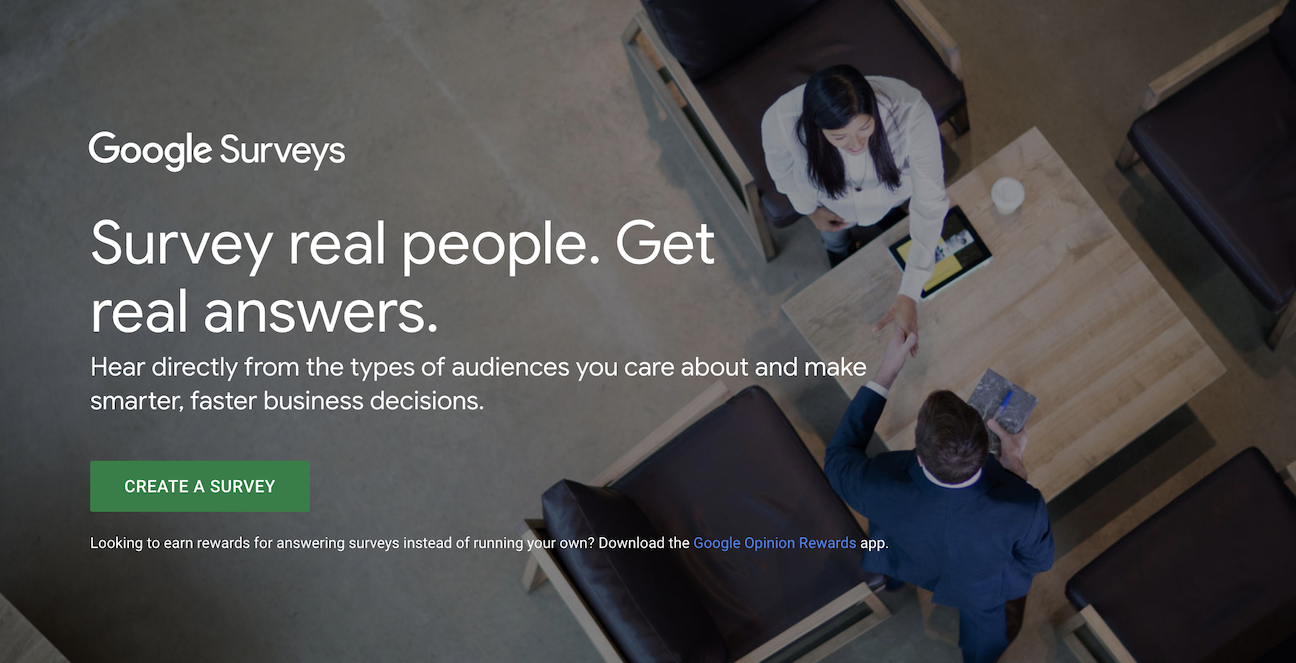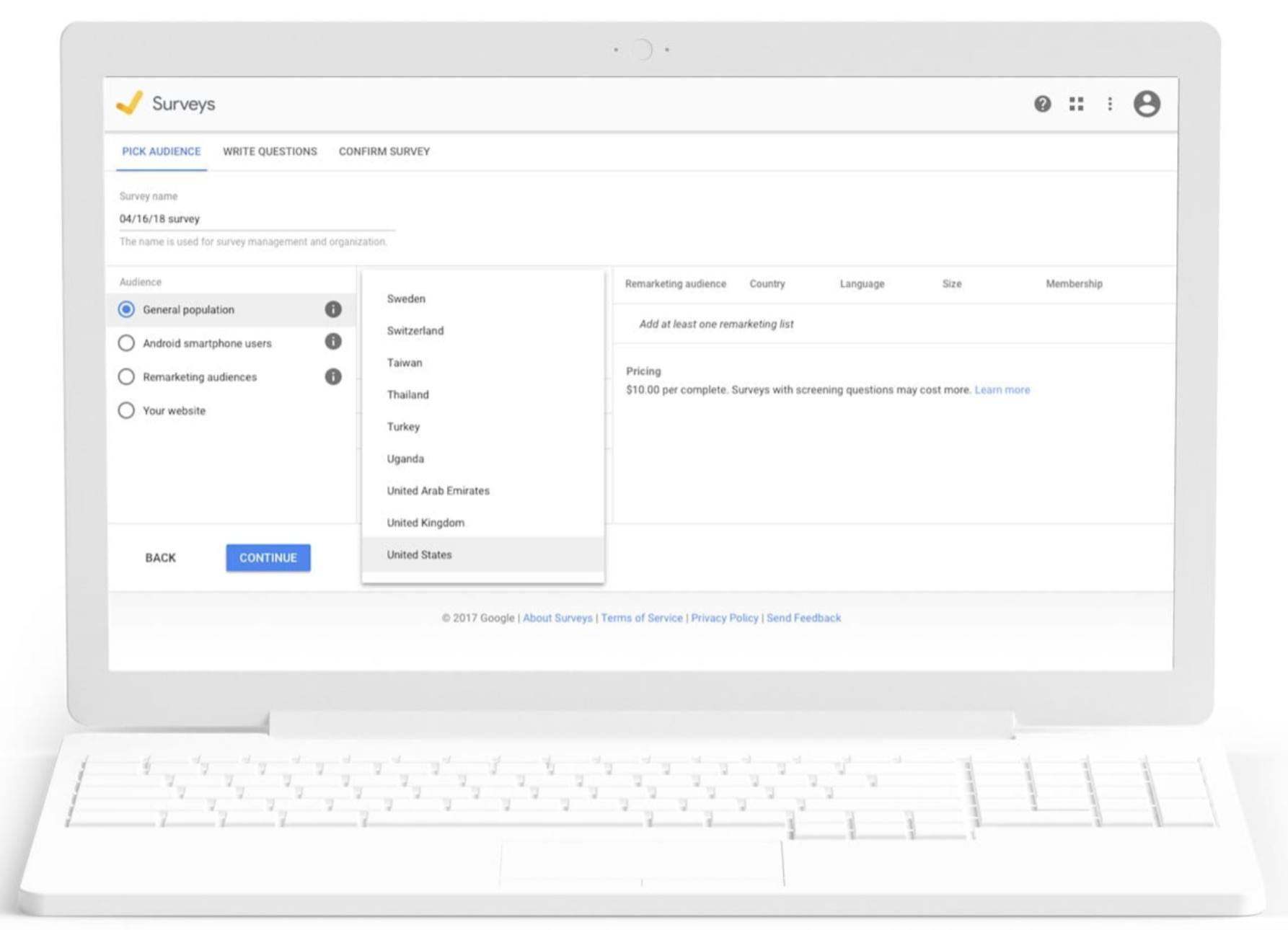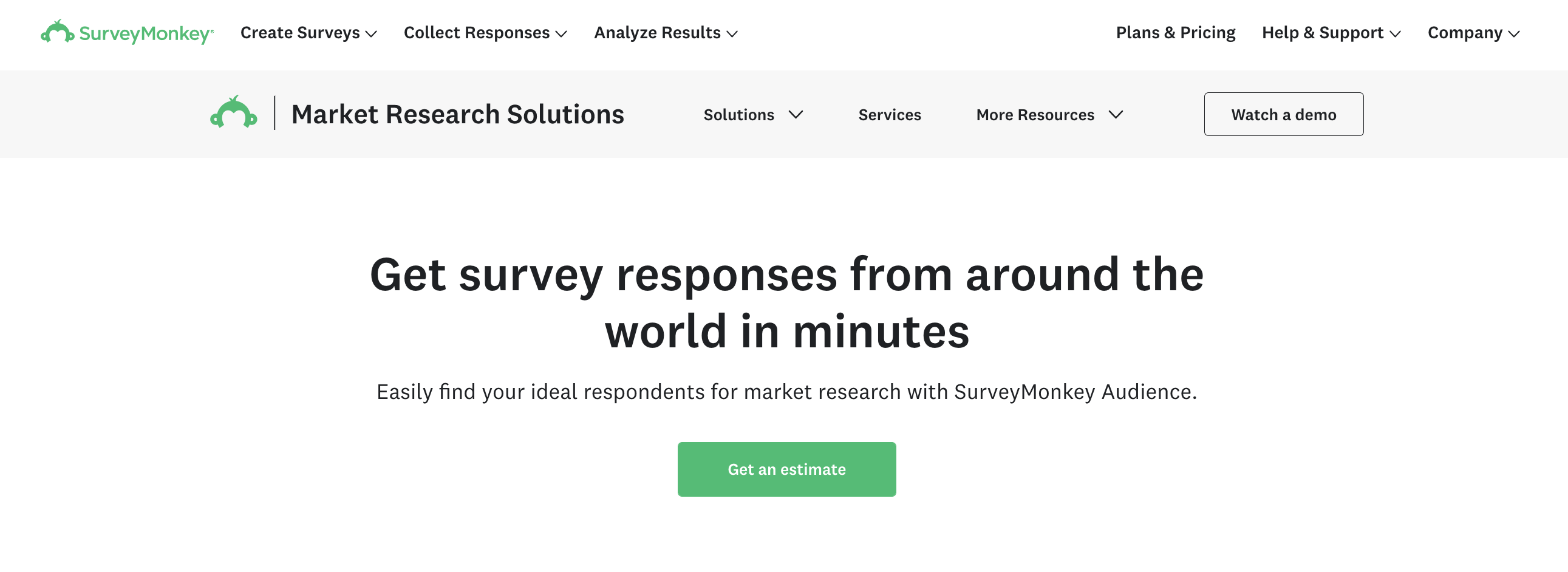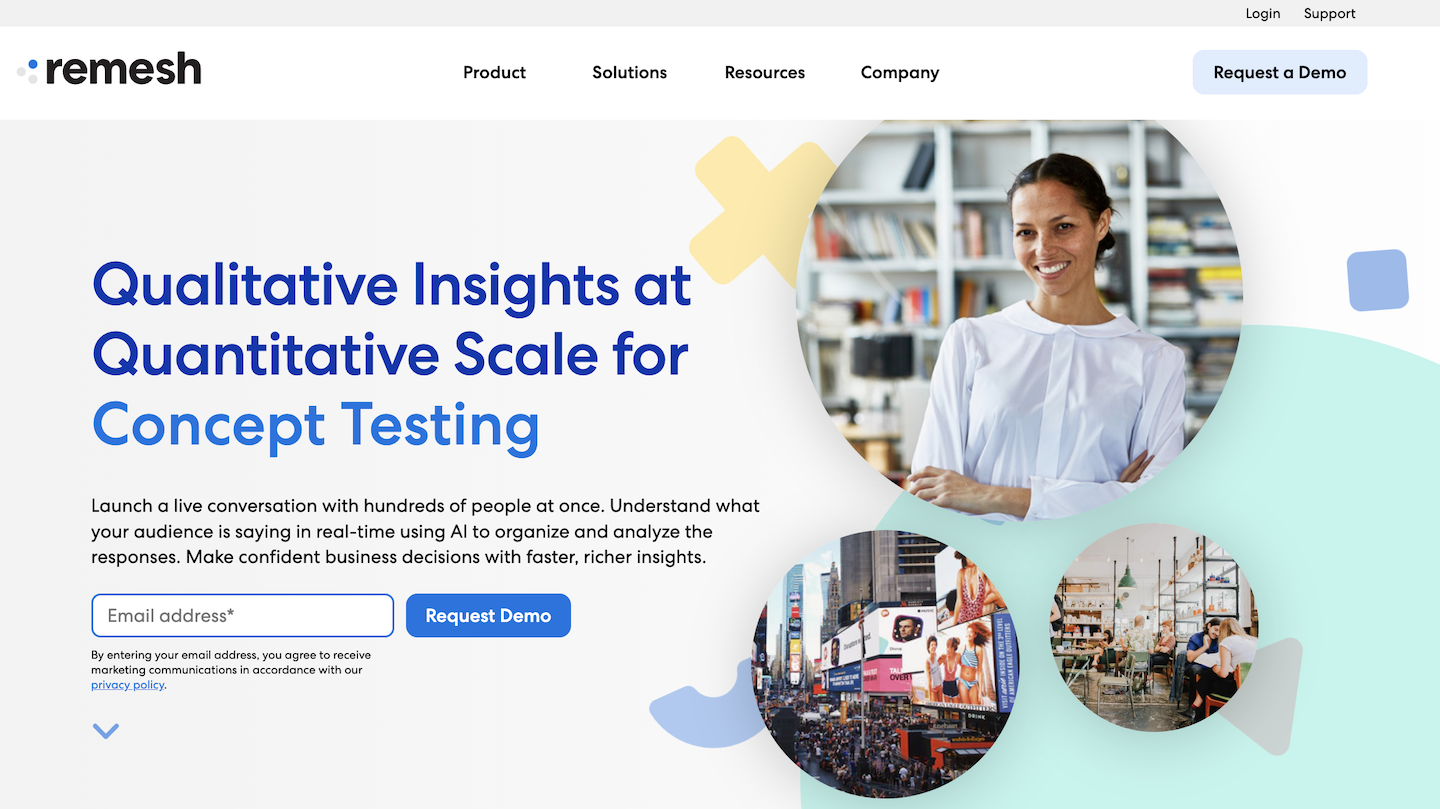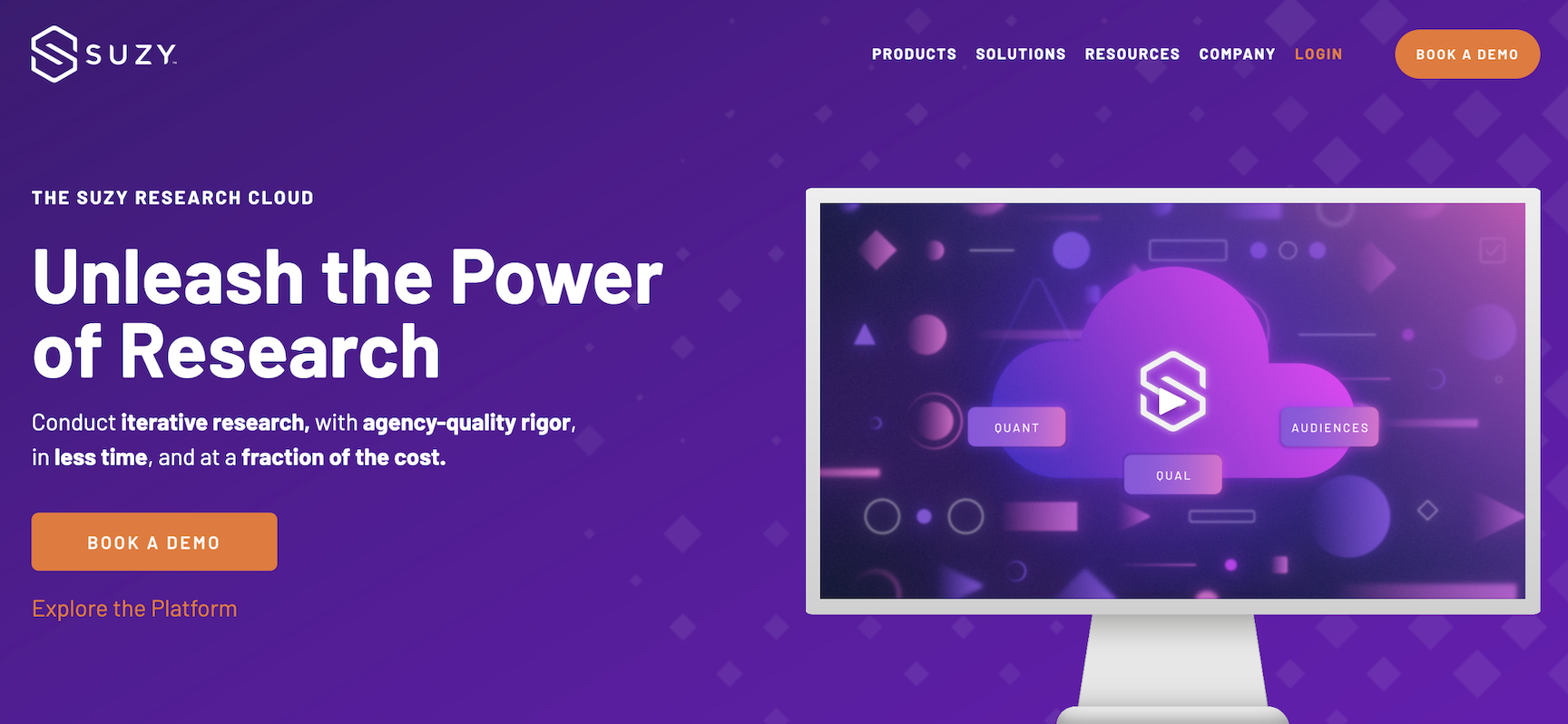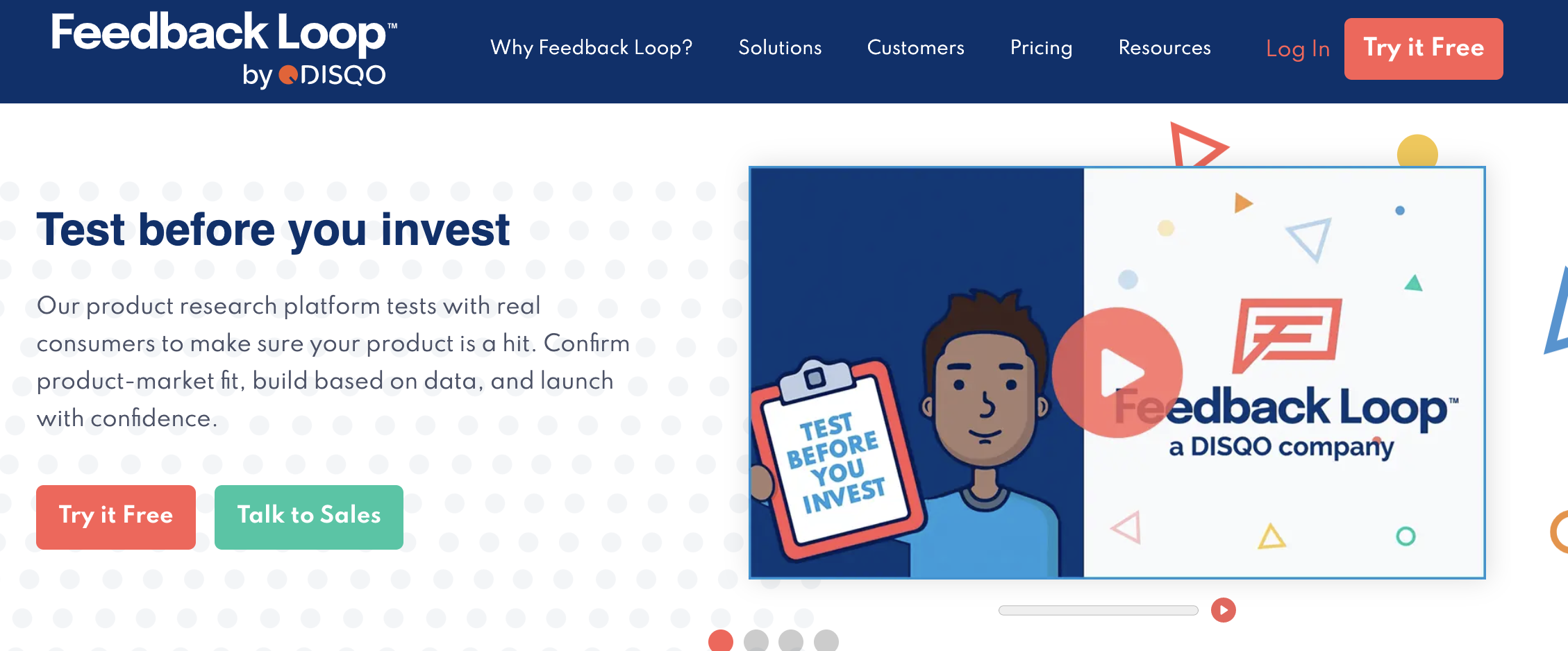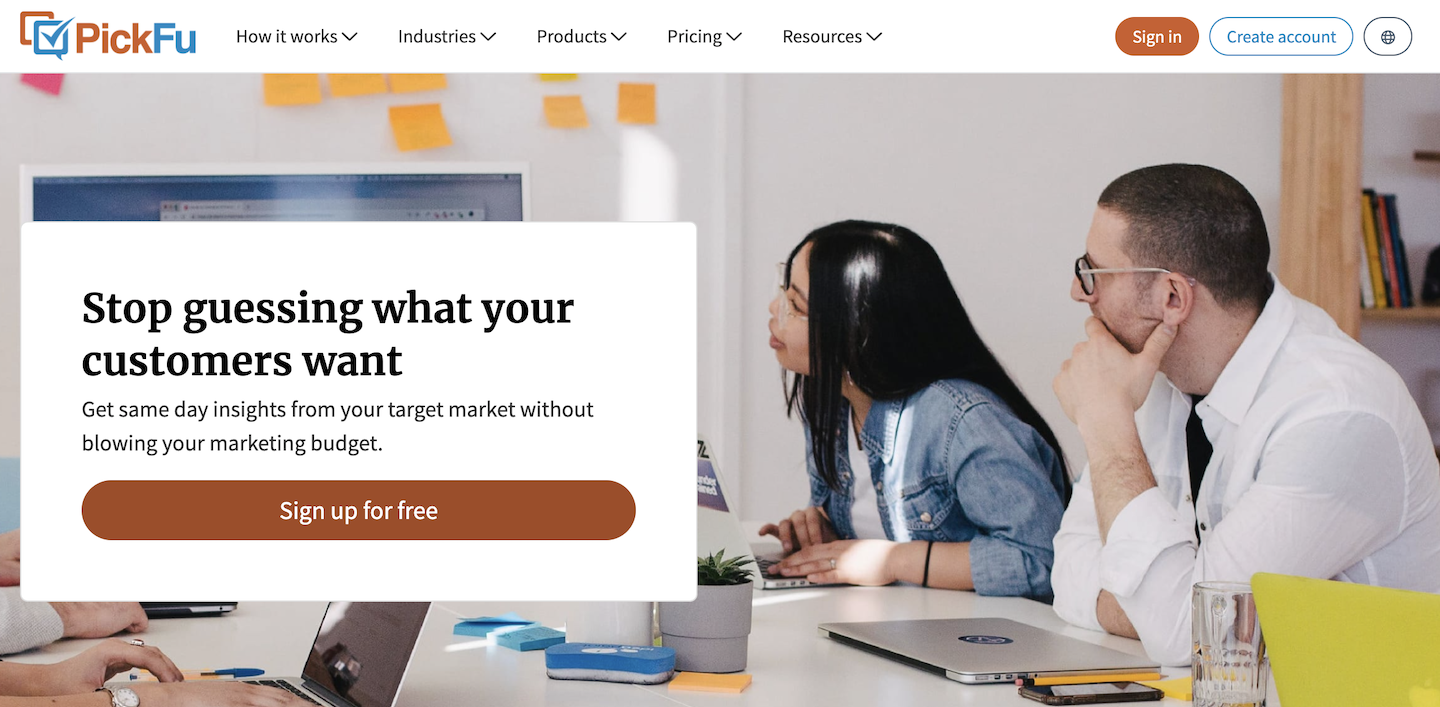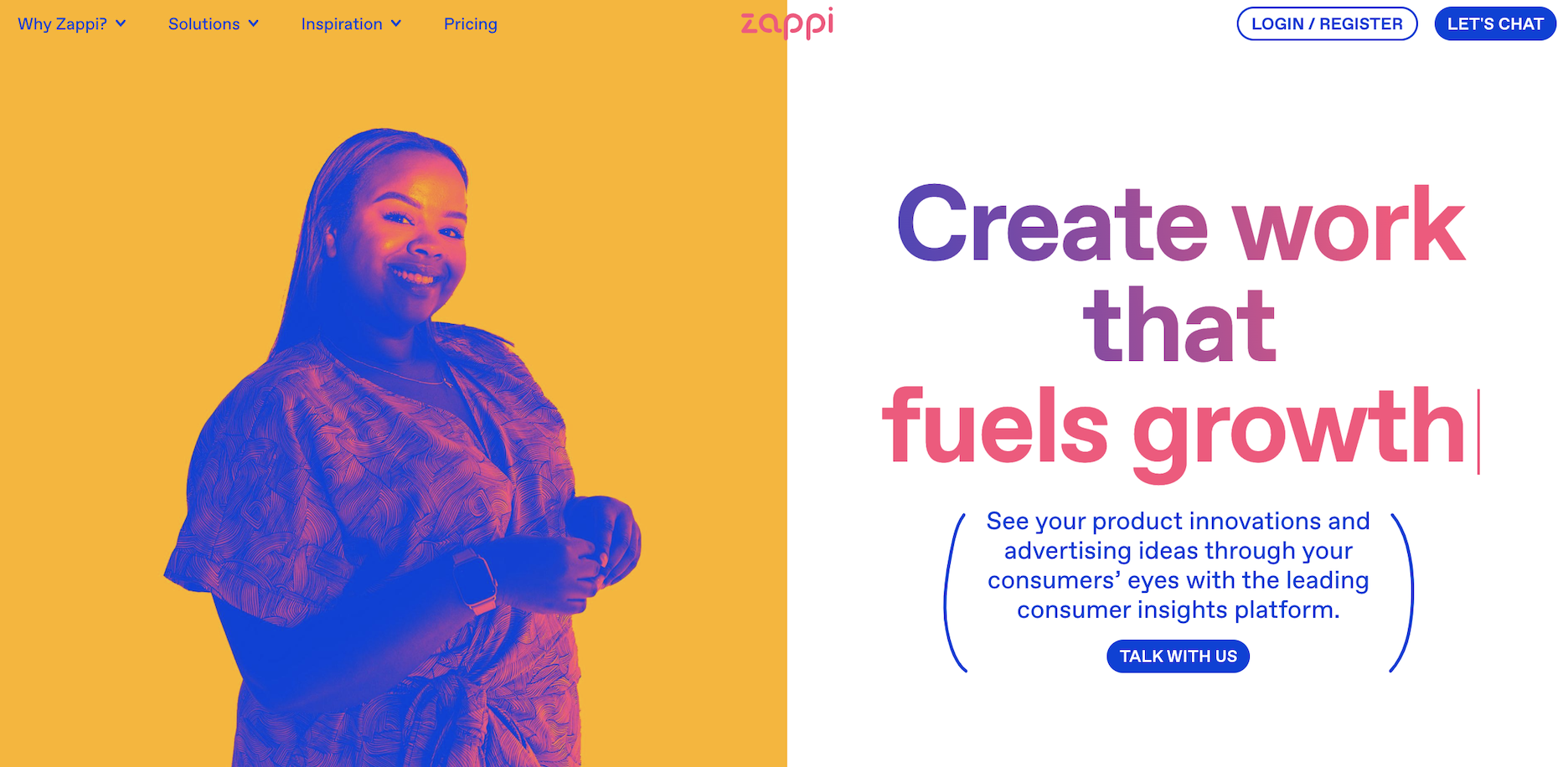Market research is the fuel for your business growth. Making decisions without consumer feedback is a recipe for disaster.
Surveys, polls, and user testing are all effective market research techniques — and for many businesses, Google Surveys was the go-to research platform.
While Google may have some successful products, like Google shopping or Google Bard, Google Surveys and Surveys 360 has shut down, you’ll need to find another tool to help you leverage consumer insights for your business.
What are the best alternatives to Google Surveys? We’ve done the homework for you and compiled 6 options.
Let’s take a look.
Use these links to navigate:
- What are Google Surveys and Surveys 360?
- How does Google Surveys work?
- Why is Google Surveys shutting down?
- 6 alternatives to Google Surveys
- #1 SurveyMonkey Audience
- #2 Remesh
- #3 Suzy
- #4 Feedback Loop
- #5 PickFu
- #6 Zappi
- Use surveys to get actionable market insights
What are Google Surveys and Surveys 360?
Google Surveys was a consumer research platform that surveyed internet users while they are browsing online.
Google sent surveys to an online panel of tens of millions of users and a mobile panel of 5 million users and collected responses within a day or two.
Businesses and marketers used Google Surveys to evaluate market trends and predict consumer behavior.
Google Surveys 360 offered advanced capabilities, including:
- Remarketing: User-list retargeting lets you reach people who have already interacted with your brand
- Advanced geographic targeting: Hypertarget your surveys by zip code
Google Surveys was designed for mid-size companies, while Surveys 360 was for large enterprises with advanced targeting needs.
How does Google Surveys work?
Users created surveys with an online editor, defining their audience with filters such as gender, age, and geography.
Each Google Survey could have up to 10 questions, four of which could be respondent screening questions.
Here were the available question types:
- Single-select questions
- Multiple-select questions (checkboxes)
- Rating questions
- Image questions
- Open-ended text questions
Once your draft was ready, Google sent your survey to online respondents who read content on partner publisher sites or to mobile respondents who are users of the Google Opinion Rewards app.
Respondents answered surveys to get access to content.
The cost of your Google Survey was determined by the price per completed response, which varied depending on your audience criteria and number of survey questions. A single-question, general-population survey was 10 cents per completed response.
You received your results in an online report, which included statistical comparisons of how people responded.
Why did Google Surveys shut down?
It’s unclear why Google Surveys and Surveys 360 went away.
In a help document about the Google Surveys shutdown, the company said, “While we believe in our mission of enabling businesses of all sizes to run custom market research with an easy to use and affordable tool, we do not believe the existing product is the best way to do this going forward.”
Google added that it is “looking for new ways to bring customer research insights at scale to businesses.”
6 alternatives to Google Surveys
If Google Surveys was a valuable part of your market research strategy, you’re likely searching for another option.
Here are 6 of the best alternatives to Google Surveys for gathering in-depth consumer research.
Let’s review the features, pros, and cons of each.
1. SurveyMonkey Audience
SurveyMonkey Audience has an audience panel of more than 175 million people worldwide.
You can build your own survey templates or use SurveyMonkey’s templates to gain insight into customer behavior and measure brand health.
SurveyMonkey allows you to add screening questions to weed out unqualified candidates and target audiences by demographics such as age, region, and gender.
Features
- Audience panel: Over 175 million people from 130+ countries with 50+ attributes.
- Survey templates: Hundreds of templates to choose from in a variety of categories.
- Market knowledge solutions: Monitor industry trends for a product category. Understand consumer preferences, habits, and purchasing behaviors of top buyer segments.
- Product innovation solutions: Have product concepts vetted by your target market or get feedback about product features, prices, and packaging.
- Brand and creative development solutions: Test your logo design, ad creative, video creative, brand names, and more.
Pricing
SurveyMonkey Audience starts at $1 per response.
Depending on your survey length, audience size, and attributes, expect to pay anywhere between hundreds of dollars to potentially five figures. For example, a 5-question, 500-response survey targeting full-time employees would cost me $750.
Pricing scales with customized survey solutions such as product testing, marketing and branding, and market insight. A SurveyMonkey product concept analysis starts at $2,300 per product concept tested.
Pros
- Millions of respondents in audience panel
- Receive feedback in minutes
- Customized targeting
Cons
- Pricey
- Lacks retargeting like Google Surveys
If you’re interested about more SurveyMonkey, we’ve written an article on SurveyMonkey alternatives.
2. Remesh
Remesh lets you have live conversations with your audience. You’re essentially running a chatroom to get feedback from hundreds of people in your targeted segmentation.
Remesh’s AI-powered platform organizes and analyzes responses in real time, highlighting common themes. This allows you to adjust your questions for the most relevant results.
You can export your findings into an online report, clickable PowerPoint, or CSV file.
Features
- Discussion guide templates: Pre-built templates with questions about messaging, onboarding, exploratory product development, etc.
- Quota targeting: Set a limit to ensure you receive the right mix of segments or prioritize a specific set of audiences.
- Existing conversations: Save and reuse previous discussion guides.
- AI analysis: The algorithm organizes and analyzes responses in real time across hundreds of participants.
- Backroom: Team members can collaborate on responses.
Pricing
Remesh doesn’t list pricing. Contact the sales team for a free demo.
Pros
- Chatroom-like dialogue for more adaptive live feedback
- Audience segmentation
- AI technology gathers insights quickly
Cons
- Pricing is unclear
3. Suzy
Suzy is for enterprise organizations who need advanced data collection. Its integrated platform is centered around a proprietary consumer panel.
Suzy is designed for the following use cases: concept testing, packaging design, pricing tests, brand tracking, and competitive analysis.
Features
- First-party audience panel: Niche audiences include B2B professionals, small business owners, and enthusiast gamers.
- Survey design and templates: A variety of question types and templates to help you get better insights.
- Analytics and reporting: Analyze data by segments, demographics, and other factors.
- Export: Report your findings with charts and a PowerPoint presentation.
- Live research: Ability to do one-on-one interviews, in-home product testing, and multi-person focus groups. Suzy handles the logistics.
Pricing
Suzy offers subscription-based pricing. Contact their team for details.
Pros
- Ability to do interactive live research
- Able to retarget saved audiences
- Proprietary audience panel
Cons
- Pricing is unlisted
4. Feedback Loop
Feedback Loop bills itself as an agile research platform for product teams to test ideas with their target audience and validate market fit before launch.
Feedback Loop’s technology allows for rapid concept testing and qualitative feedback at scale.
Features
- Technology-powered surveys: Easy process to create surveys (or use templates) for early-stage discovery, concept testing, message testing, and more.
- Audience: Over 70 million U.S. participants sourced from Cint and Lucid panel providers.
- Slack integration: Share your data quickly and easily with your team via Slack.
- In-app support: In app-guides and managed or assisted support.
Pricing
While you can experiment with the basic features of the platform for free, subscriptions start at $20,000, billed annually. With no option for monthly billing, this makes it difficult for small businesses or startups.
The main difference between plans is the number of respondents.
Pros
- Easy-to-build surveys
- Research consultant support
- Broad audience and targeting options
Cons
- Very expensive
- Not so distinguishable from other market research platforms
5. PickFu
PickFu is a self-serve consumer research platform that combines speed, ease, and high-quality data.
With tens of thousands of active respondents worldwide and more than 90 audience targeting options, you can get feedback and iterate quickly on any project — whether you’re setting price points, split testing landing pages, or choosing a logo design.
The platform enables you to test up to 8 assets at once with anywhere from 15 to 500 consumers.
PickFu polls usually finish in minutes or hours. Every poll includes written feedback from respondents.
Features
- Qualitative and quantitative feedback: Written responses along with scores for every poll.
- Flexible poll formats: Choose from Head-to-head, Ranked, Open-ended, and Click Test polls, or pre-configured Templates.
- Hypertargeting: Tailor your audience with 90+ targeting traits, including income level, hobbies, buying and consumption habits.
- Expert poll analysis. Request a written analysis of your poll results with key data insights and suggested next steps.
Pricing
Polls start at $1 per response — no subscription required. Monthly plans offer discounted pricing for frequent polling in volume.
Pros
- Fast, affordable, DIY consumer research
- Robust targeting options
- Multiple poll types
Cons
- 500 is the maximum number of respondents available
6. Zappi
Zappi is targeted at creators, marketers, and advertisers who use consumer insights to guide their branding and product innovation.
Zappi’s strength is in its live testing and deep analytics capabilities, especially for ad campaign creative. You can use the platform to get real-time, second-by-second feedback on videos and digital ads to understand what drives purchases.
Features
- Pre-configured or customizable audiences: Target by segments such as geography or age.
- Real-time feedback: Get second-by-second reactions to videos.
- Historical reporting and benchmarking: Review how past ads and products performed and benchmark results again your industry’s.
- Inspiration database: Explore Zappi’s database of ad creatives from big brands.
- Content theme analysis: Analyze your ad creative with filters, for example, to measure whether background music increases or decreases engagement.
Pricing
Zappi offers three plans but doesn’t list pricing publicly.
Pros
- Tailored for testing a range of creatives
- Comparative benchmarking
- Historical data analytics
Cons
- Doesn’t list pricing
Use surveys to get actionable market insights
Consumer research should be the foundation of your decision-making. Continual feedback helps you better serve your customers by eliminating guesswork.
Use one of these 6 Google Surveys alternatives to get valuable insights on your products, services, and marketing assets.
With PickFu, you can get started immediately. Once you create your free PickFu account, you’ll be polling in minutes.


